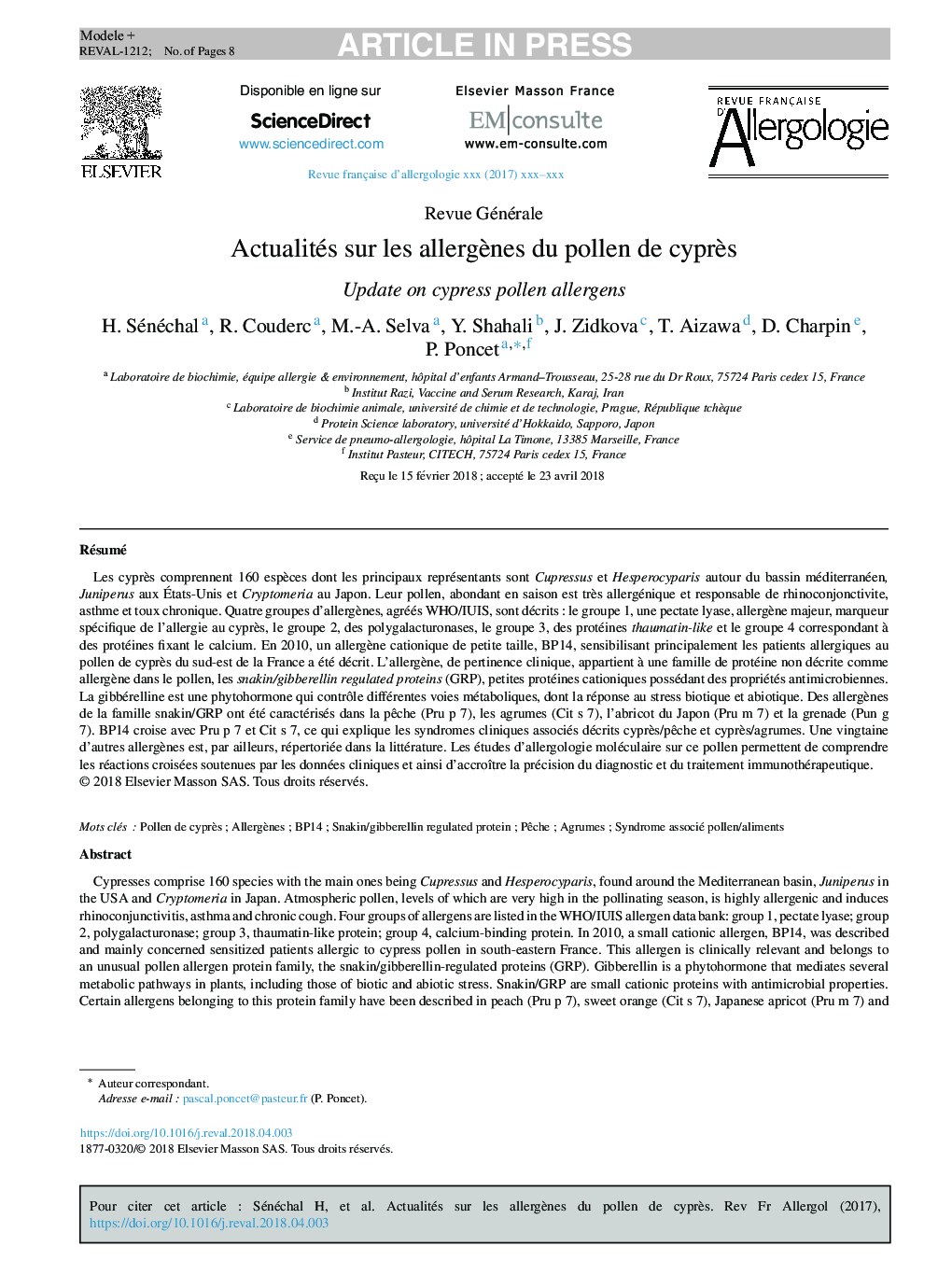| Article ID | Journal | Published Year | Pages | File Type |
|---|---|---|---|---|
| 11014188 | Revue Française d'Allergologie | 2018 | 8 Pages |
Abstract
Cypresses comprise 160 species with the main ones being Cupressus and Hesperocyparis, found around the Mediterranean basin, Juniperus in the USA and Cryptomeria in Japan. Atmospheric pollen, levels of which are very high in the pollinating season, is highly allergenic and induces rhinoconjunctivitis, asthma and chronic cough. Four groups of allergens are listed in the WHO/IUIS allergen data bank: group 1, pectate lyase; group 2, polygalacturonase; group 3, thaumatin-like protein; group 4, calcium-binding protein. In 2010, a small cationic allergen, BP14, was described and mainly concerned sensitized patients allergic to cypress pollen in south-eastern France. This allergen is clinically relevant and belongs to an unusual pollen allergen protein family, the snakin/gibberellin-regulated proteins (GRP). Gibberellin is a phytohormone that mediates several metabolic pathways in plants, including those of biotic and abiotic stress. Snakin/GRP are small cationic proteins with antimicrobial properties. Certain allergens belonging to this protein family have been described in peach (Pru p 7), sweet orange (Cit s 7), Japanese apricot (Pru m 7) and pomegranate (Pun g 7). BP14 is cross-reactive with Pru p 7 and Cit s 7. These results account for the clinically described associated cypress/peach and cypress/citrus syndromes. Further, around 20 more allergens have been characterized in the literature. Molecular allergology studies on cypress pollen provide an understanding of cross reactions supported by clinical data, thus improving the precision of diagnosis and of immunotherapeutic management.
Related Topics
Health Sciences
Medicine and Dentistry
Immunology, Allergology and Rheumatology
Authors
H. Sénéchal, R. Couderc, M.-A. Selva, Y. Shahali, J. Zidkova, T. Aizawa, D. Charpin, P. Poncet,
